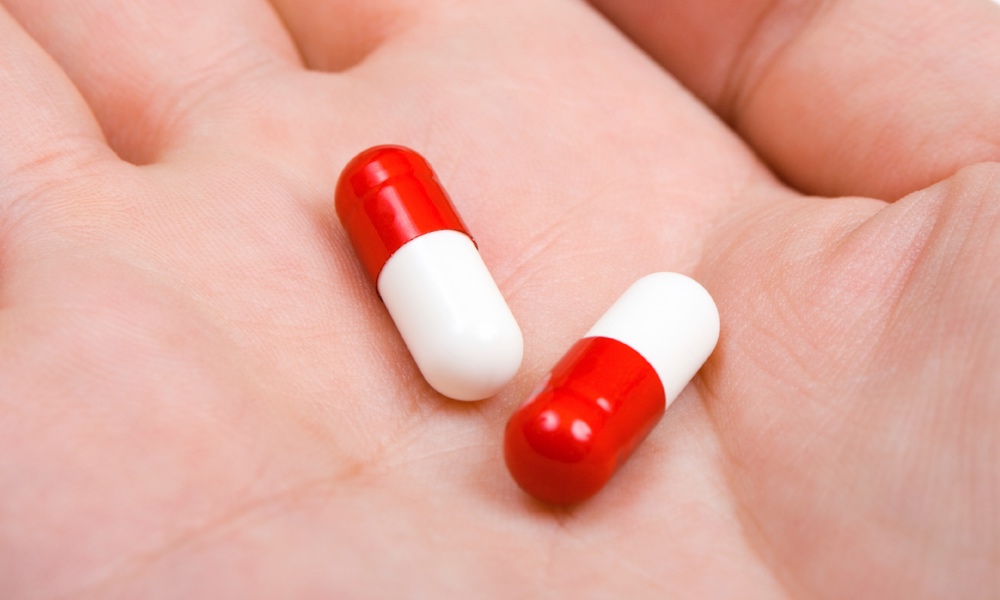Dr. Munikrishnappa is Adjunct Clinical Instructor, Department of Geriatrics, Saint Louis University School of Medicine, St. Louis, Missouri.
There may be hundreds of things that can go wrong with sex from the male point of view, but scientists divide male sexual dysfunction into three categories. They are: erectile dysfunction (problems with erection), ejaculatory dysfunction (problems with ejaculation) and decrease in libido (loss of interest in sex).
The most familiar to anyone who watches sports on TV is erectile dysfunction, called "ED" for short. The technical definition of ED is the inability to achieve or maintain enough of an erection for satisfactory sexual performance. Most men have the problem at one time ot another — 52% of American men aged 40 to 70 years according to a large study called the Massachusetts Male Aging Study (MMAS). More recent studies have confirmed the common perception that erection problems become more frequent with age.
One reason for this is simply the normal effects of aging on the body. With age, structural changes occur in the penis that make it, like any aging muscle, work less well. Age brings a decreased concentration of elastic fibers and smooth muscle fibers, both of which play an important part in erection. Another factor is age-related disease. ED is frequently associated with atherosclerosis, diabetes and other diseases that also become more common as we age.
An erection is not a simple thing. It requires a complex interaction involving the nervous system, blood flow, hormones and the individual's psychological make-up. It generally occurs in one of three different ways — at night during the REM (rapid eye movement) phase of sleep, from physical touching of the genitals and from psychological stimuli such as a reaction to smell, sight or memory.
The muscles within the penis play a vital role in erection. When these muscles are contracted, only the small amount of blood needed to keep the tissues alive is allowed; this results in a flaccid, or un-erect, penis.An erection is not a simple thing. It requires a complex interaction involving the nervous system, blood flow, hormones and the individual's psychological make-up.
With sexual stimulation, these muscles relax, allow more blood to flow into the penis and cause erection. This happens according to the following complex series of stages. While this may be too technical to be of much use to the average non-medical person, it serves to illustrate the amazing complexity of what may seem a simple bodily function.
| Sexual stimulus
↓ Neurotransmitters including nitric oxide (NO) released from nonadrenergic and noncholinergic cavernous nerve terminals and endothelial cells ↓ Interacts with enzyme guanylyl cyclase to increase cyclic guanosine monophosphate (cGMP) within the smooth muscle cell* ↓ Decreased intra-cellular calcium ↓ Smooth muscle relaxation ↓ Blood vessel dilatation ↓ Increased blood flow into the penis ↓ Sinusoidal relaxation with trapping of blood ↓ Compression of subtunical venular plexus between tunica albuginea and peripheral sinusoids causing decreased venous outflow Compression of emissary veins between the inner circular and the outer longitudinal layers by further stretching of tunica causing further decrease in venous outflow to a minimum ↓ PO2 increases to about 90 mm Hg and intracavernous pressure to around 100 mm Hg, causing the penis to rise from the dependent position to the erect state (the full-erection phase) ↓ With contraction of the ischiocavernous muscles, a further pressure increase to several hundred millimeters of mercury occurs causing rigid-erection phase. |
Who Is at Risk for ED?
Many of the same things that cause cardiovascular disease also contribute to ED, including diabetes, hypertension and high "bad" cholesterol. Endothelial dysfunction, or problems with the inner lining of the blood vessels, seems to be a prime underlying cause of both ED and cardiovascular disease in general.
Other risk factors for ED include hypogonadism (a lack of sex hormone production — the usual symptoms are sexual dysfunction, decreased beard and body hair, breast enlargement and muscle loss), drug use or abuse, brain damage, a rare condition called Peyronie's disease, priapism (a painful and dangerous condition in which erections last too long), depression, alcohol use, lack of sexual knowledge, poor sexual technique, problems with interpersonal relationships, obesity, smoking and chronic kidney disease.Getting lots of exercise and having a lean body are associated with lower risk for ED, while obesity, smoking, television viewing and alcohol use are associated with higher risk.
Getting lots of exercise and having a lean body are associated with lower risk for ED, while obesity, smoking, television viewing and alcohol use are associated with higher risk. In one study, a third of obese men were able to improve their ED with lifestyle changes alone. Another common cause of ED is prostate and other surgeries. Average surgical risks for ED are as follows: 43-100% from radical prostatectomy, 30-50% from nerve-sparing surgery, 29% from perineal prostatectomy (no cancer), 15-100% from abdominal perineal resection and 2 to 49% for external sphincterotomy.
Physical Examination and Evaluation for ED
When doctors diagnose ED, the first thing they do is to determine if the primary problem is ED or a different sexual problem, such as ejaculatory dysfunction or decreased libido. They then look at the individual's medical history in order to identify risk factors for ED. This is followed by a physical exam which should include checking genital and testicular size and looking for any asymmetry, mass, evidence of cancer or hypogonadism, checking for the presence of scarring at the back or base of the penis (indications of Peyronie's disease), bulbocavernous reflex (an indicator of spinal damage), and rectal examination to check the prostate, anal sphincter tone and perianal sensation.
Table 1.
Clues that Point to ED.
| Erection Specific Question | Clinical Importance |
|---|---|
| Is there difficulty in achieving erections firm enough for satisfactory sexual intercourse most of the time? | ED present |
| Did ED occur suddenly? Are nocturnal or early morning erections absent? Any partner related problems? | Likely psychogenic cause |
| Are erections painful or is the penis curved? | Peyronie's disease? |
| Any decrease in desire for sexual activity noted? | Hypogonadism, mood disorders? |
| Any injury to the penis, excessive bicycling or genitourinary surgery? | Bicycling could in some individuals cause prolonged pressure on the pudendal and cavernosal nerves or decrease oxygen pressure in the pudendal arteries which can result in penile numbness and impotence. |
| Any treatments already attempted for ED? | Try other treatments |
| General Medical Questions | Clinical Importance |
|---|---|
| Medication history — prescription, over-the-counter (OTC) and recreational |
|
| Symptoms related to heart disease, especially chest pain after exertion and shortness of breath; endocrine problems such as hypogonadism; hyperprolactinemia; diabetes mellitus; hypertension; nervous system disorders (e.g., spinal cord trauma, stroke and multiple sclerosis); hyperlipidemia; sleep apnea; anxiety and depression. |
The medical examination usually includes assessment for cardiovascular risk factors such as obesity and hypertension, signs of nerve problems and signs of endocrine system disorders (e.g., vision problems, enlarged thyroid gland, abnormal male secondary sexual characteristics or enlarged breasts).
Testing
- Complete blood count
- urinalysis
- creatinine
- lipid profile
- fasting blood sugar
- and thyroid function studies.
Hormonal Levels
Many cases of ED are caused by endocrine system problems, that is, problems with the body's production of certain hormones. In one study, 19% of 401 men with ED had hypogonadism, 5% had hypothyroidism (a condition in which the thyroid gland produces too little hormone), 1% had hyperthyroidism (a condition in which the thyroid gland produces too much hormone), and 4% had hyperprolactinemia (a pituitary gland problem).
Testosterone, prolactin, thyroid stimulating hormone (TSH), leutinizing hormone (LH), follicular stimulating hormone (FSH) is usually tested as part of the evaluation of men with ED, especially for those with possible hypogonadism.
Nocturnal Penile Tumescence (NPT) Testing
NPT is a test that detects erections in someone who is asleep. Recent advances in this test have made it a useful tool in diagnosing ED and determining if surgery is necessary. If an ED sufferer has a normal NPT, a psychological cause is likely, as opposed to someone with an abnormal NPT, who is likely to have either a neurological or vascular cause for ED.
How to Treat ED
There are several treatments available for ED. Both the ED sufferer and any sexual partner should discuss their risks and benefits fully with the physician in order to make the best informed choice.
The most common treatments include:
Medical Treatments
- PDE Type 5 inhibitors, a new class of drugs that promote blood circulation
- The hormone testosterone
- Penile injections with various drugs that stimulate erection
- Psychotherapy and behavioral therapy, with or without psychoactive drugs
PDE Type 5 (PDE-5) inhibitors
Since their introduction in 1998, PDE-5 inhibitors have helped many men with ED. There are presently three drugs in this class that are widely used: sildenafil, vardenafil and tadalafil. Udenafil, another, long acting PDE-5 inhibitor, is currently under study.
General Characteristics of PDE-5s
- Often the first line of therapy
- All of them require sexual arousal to cause erection, unlike the penile injection methods
- Need to be taken at least an hour before sexual activity
- For those with hypogonadism, sometimes more effective in combination with testosterone
Cautions and Potential Dangers
- These drugs are dangerous for those with the eye disease retinitis pigmentosa.
- They may cause severe low blood pressure if used in combination with nitrate drugs, which are used to treat heart disease. While this is an issue that men should discuss fully with their own doctor, as a general rule nitrates should not be given within 24 hours of sildenafil or vardenafil, or within 48 hours of tadalafil. Men who are taking nitrates should be questioned about their exercise tolerance and whether they have been active or inactive before they are given PDE-5s, because sexual activity doubles the chances of a heart attack. Some men may be willing to accept this risk.
- Men being treated for enlarged prostate sometimes find that their medications, combined with PDE-5 inhibitors, cause sudden drops in blood pressure.
- Lower doses should be used in men with ED caused by spinal cord trauma, as they could be at increased risk for priapism.
Sildenafil
- Better taken on an empty stomach
- Begins to work in 30 to 60 minutes, should be taken an hour before sexual activity; effects last for four hours.
- Side effects: headache, flushing, stomach upset, diarrhea, stuffy nose and nausea. Temporary blue-tinged vision, unique to sildinafil, occurs in 3% of cases, lasting two to three hours, and is not dangerous.
- All men may not respond equally.
Vardenafil and tadalafil are similar in many ways to sildenafil. The important differences include:
Vardenafil
- Take with or without food
- Side effects: back pain, muscle pain and joint pain
Tadalafil
- Take with or without food
- Begins to work in 30 minutes; effects last 24 to 36 hours
Intraurethral Alprostadil
- Inserted into the tip of the penis
- Effective for men of all ages
- Side effects: fainting (a health professional must observe first dose), pain, priapism
Intracavernosal Penile Injections
- The most effective treatment for ED
- Side effects include pain, scarring in the penis, low blood pressure and priapism
- Not FDA approved, but in use
Testosterone
Men who show evidence of hypogonadism, as well as those who are not helped by PDE-5 inhibitors, may have their testosterone levels checked. Hypogonadism is suspected where there is decreased libido, mental slowness, muscle weakness and low testosterone levels. It can be treated with testosterone replacement therapy. While testosterone replacement therapy does not improve erectile function in men with normal levels of testosterone, in men with low testosterone, it increases libido, nocturnal erections and frequency of sexual intercourse. Increasing evidence shows that combining testosterone and PDE-5 inhibitors can help those who are not helped by testosterone or PDE-5 inhibitors by themselves.
There are possible side effects to testosterone therapy, chiefly liver damage may be associated with certain forms of testosterone.58 Other potential adverse effects include gynecomastia, lowered "good" cholesterol, over-production of red blood cells, swelling, sleep apnea, hypertension, infertility and enlarged prostate. While it does not seem to be a carcinogen per se, there is some evidence that added testosterone can stimulate the growth of an existing cancer. This is why, before starting replacement therapy, doctors will check for any history of the above diseases, as well as check the prostate with a PSA test and a digital rectal exam and do a baseline complete blood count, liver function tests and lipid profile. In general, it is reassuring to note that, serious side-effects are few, especially for the commonly used injectable testosterone esters, taken intermittently in the usual quantities according to one study.
Testosterone is delivered to the body by injection, skin patch, oral tablets and topical gel. As soon as two weeks after beginning testosterone therapy — and again after three months — the doctor will remeasure the testosterone level. The goal is to bring the testosterone level up to the low or middle-normal range.While it does not seem to be a carcinogen per se , there is some evidence that added testosterone can stimulate the growth of an existing cancer.
Psychotherapy and Behavioral Therapy
Men whose ED is caused by psychological factors such as depression and anxiety usually benefit from psychotherapy (with or without psychoactive drugs). Caution needs to be exercised, however, as some antidepressant drugs themselves cause ED. Side effects such as tachycardia and hypertension also limit the use of some antidepressants in men with heart disease.
Non-Medical Therapy
A topical vacuum pump creates a vacuum around the penis causing blood to flow into the penis. Once the penis is erect, a ring is placed over the base of the penis and the pump is removed.
If all else fails, surgery, including penile prosthesis could be considered. Inflatable prostheses may appear more natural than the semi-rigid and malleable varieties, but they have a big down side — high rates of infection, especially in diabetics, and a high rate of failure.
What Is Ahead?
Medical science is gradually acquiring a better understanding of the molecular mechanisms, especially the neurotransmitters, involved in the physiology of erection. New studies to assess the effectiveness of combination therapies and their performance for men of varying ages need to be pursued. For the substantial number of men who either do not respond to or cannot tolerate PDE-5 inhibitor drugs, other therapies that do not target the vascular system must be developed. Melanocortin receptor agonists are a new class of drugs that are currently being explored for this purpose. Bremelanotide is the first compound of the class that appears promising in early clinical studies. Gene transfer therapy is another potential therapy. Early human trials have been conducted and further investigation is ongoing.ADVERTISEMENT




